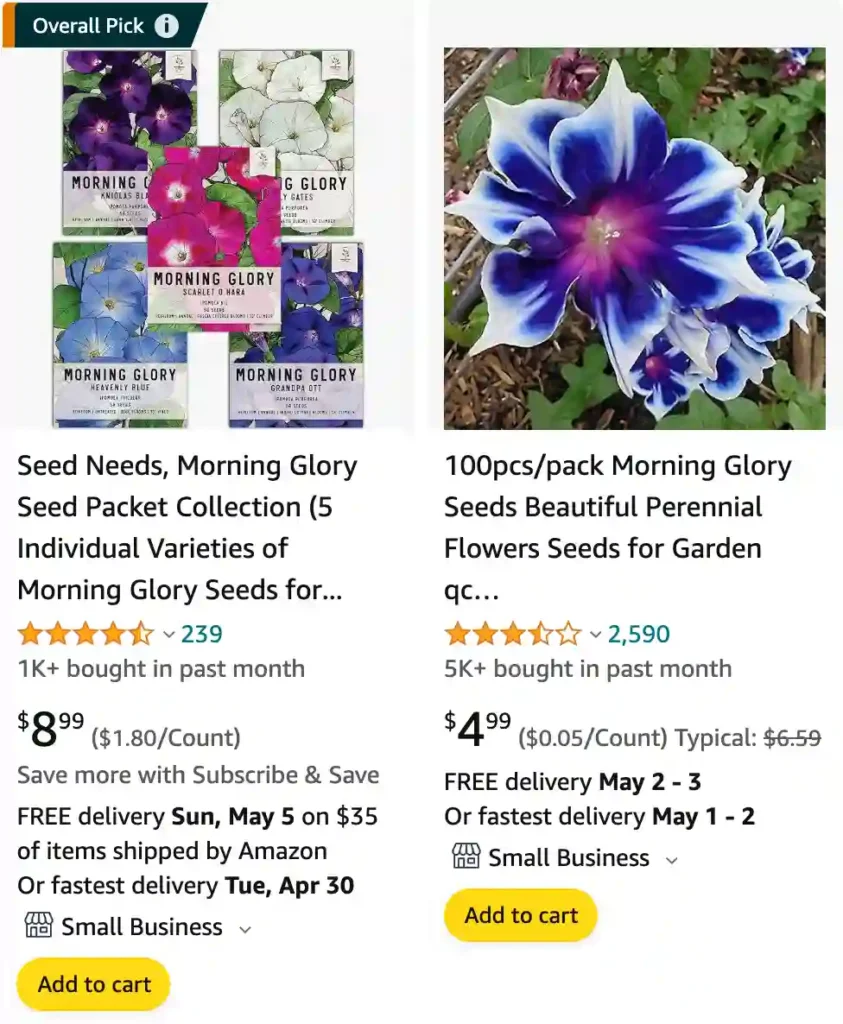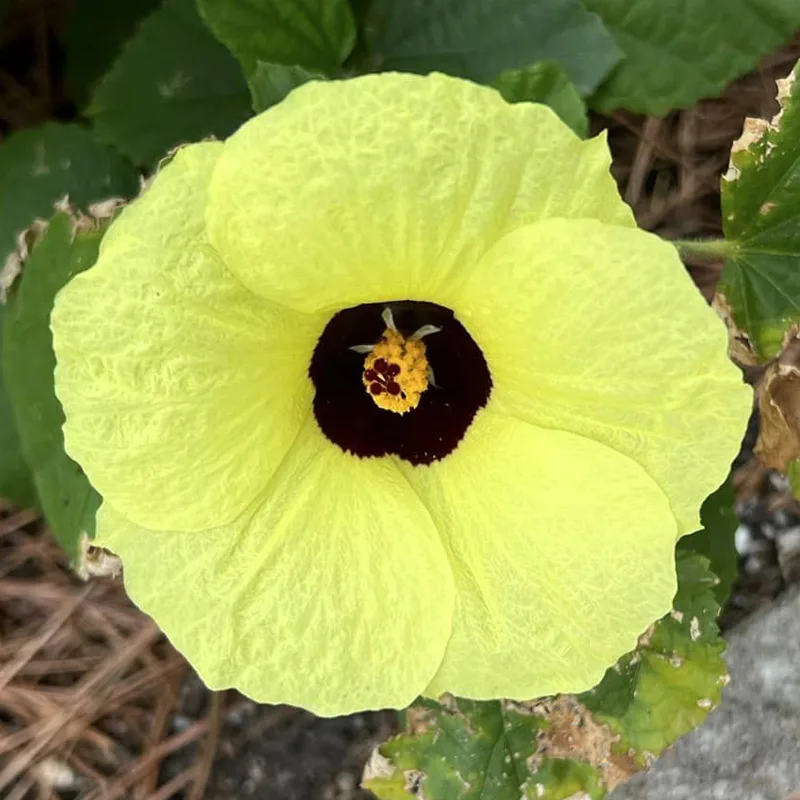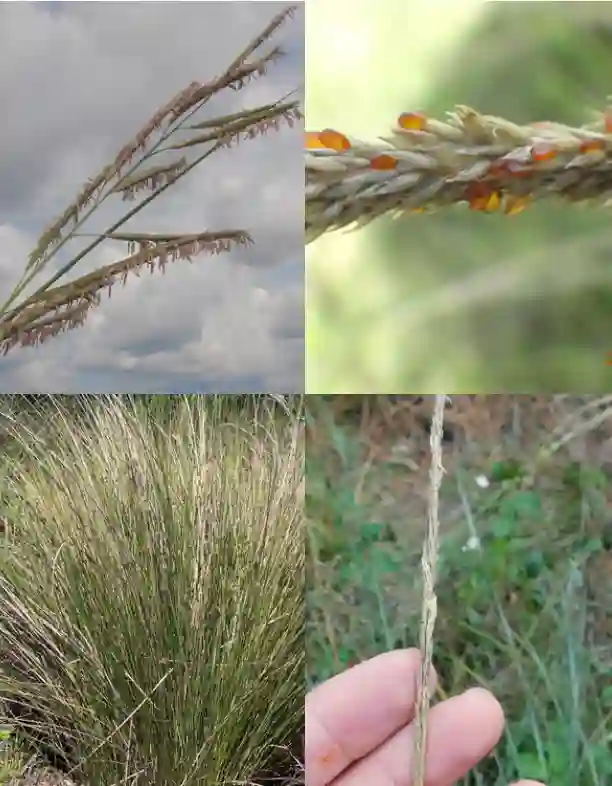
My Experience with Ipomoea purpurea: A Love Affair with the Common Morning Glory
As a plant enthusiast, I’ve cultivated my fair share of vibrant and unruly plants. Among them, Ipomoea Purpurea, the Common Morning Glory, holds a special place in my heart. This vine isn’t just a plant; it’s an experience—a dance of color and persistence that feels like nature’s morning greeting. Let me take you on my journey with this captivating bloom.
637 Species in Genus Ipomoea
FAQs
Do morning glories come back every year?
It depends! In the past, I’ve had mixed experiences with morning glories. I planted some a few years ago in pots on my balcony, and those definitely didn’t survive the winter. They were beautiful all summer with their big, colorful blooms, but as soon as the frost hit, they died off completely. However, I’ve heard from friends in warmer climates that theirs come back year after year. Maybe I should try planting some in the ground next year and see if they surprise me!
Are morning glories invasive?
That’s a good question! It seems like morning glories can be a double-edged sword. The ones I planted in pots were well-behaved and didn’t try to take over my balcony. But I’ve also seen what can happen when they’re planted in the ground. My neighbor a few streets over has a trellis covered in morning glories, and those things are wild! They’re constantly reaching out and sprawling everywhere. They even seem to sneak under the fence and pop up in his flowerbeds. They’re pretty, but I think I’d prefer something a little less enthusiastic for my own garden.
Do deer eat morning glories?
This one’s a bit of a mystery! Deer haven’t exactly been a problem in my little balcony garden, thankfully. But I have heard conflicting things about morning glories and deer. Some people say they’re completely deer-resistant, while others have had their morning glory vines munched on by hungry deer. Maybe it depends on the type of morning glory or how desperate the deer are for food. I guess if I ever plant them in the ground, I’d have to keep an eye out for nibbled leaves and maybe try some deer repellent just in case!
Are morning glories poisonous to cats?
It depends! In the past, I’ve had mixed experiences with morning glories. I planted some a few years ago in pots on my balcony, and those definitely didn’t survive the winter. They were beautiful all summer with their big, colorful blooms, but as soon as the frost hit, they died off completely. However, I’ve heard from friends in warmer climates that theirs come back year after year. Maybe I should try planting some in the ground next year and see if they surprise me!
Do hummingbirds like morning glories?
Ah, hummingbirds! Those little jewels definitely seem to love my morning glories when I have them. It’s always a delight to see them flitting around the flowers, their wings a blur. The trumpet-shaped blooms are the perfect size for their long beaks, and I love watching them hover and sip the nectar. There’s something so magical about attracting these tiny, energetic birds to my balcony. Maybe that’s another reason why I might try planting them in the ground again next year – to create a little hummingbird haven!
What does morning glory mean? What do morning glories symbolize?
In my experience, the meaning of morning glories goes beyond just their pretty blooms. They really capture the feeling of a fresh start. Every morning, they open up their beautiful faces to greet the day, like a reminder to approach each day with optimism. That’s why I think they’re a great flower for anyone who’s going through a new chapter in life, like a new job or a big move. Plus, the way they climb and reach for the sun kind of inspires me to keep growing and striving for my own goals. They might be delicate flowers, but they have a real spirit to them!
Can chickens eat morning glory?
Oh, this is a tricky one! Morning glories are definitely on the “not recommended” list for my chickens. I know some folks say their chickens nibble on them with no problems, but I’d rather be safe than sorry. Those gorgeous flowers contain toxins that can make my feathery friends sick, and I’ve seen information about morning glory seeds being especially dangerous. My coop isn’t huge, and I wouldn’t want them accidentally ingesting something harmful. There are plenty of safe greens and veggies I can toss in their run for them to peck at, so I think I’ll stick to those for their foraging fun.
How to propagate morning glory?
I’ve actually had good luck propagating morning glories in the past! They seem to be pretty easygoing. My favorite way is by seed. I love seeing those tiny sprouts emerge and watching them grow into these beautiful flowering vines. Last year, I saved some seeds from the blooms and let them dry out completely. Then, in the spring, I planted them in small pots with some good quality potting mix. I kept the soil moist and gave them plenty of warm sunshine, and before I knew it, I had little seedlings reaching for the light! You can also try propagating with stem cuttings, but I haven’t personally experimented with that method yet. No matter which way you choose, morning glories are pretty forgiving plants, so I’m sure you’ll have success!
What color are morning glories?
In my balcony garden, morning glories have always been a burst of color! They come in a whole range – I’ve seen stunning shades of purple, bright pinks, and even classic white. There are even varieties with multiple colors on the same bloom! It’s like a surprise every morning to see which colors are popping in the sunshine. I think part of the reason I love them so much is because they match the vibrant energy I try to bring to each day. You really can’t go wrong with morning glories – no matter your favorite color, there’s bound to be a variety out there to brighten your day!
What do morning glory leaves look like?
Ah, morning glory leaves! They’re just as charming as the flowers themselves, in my opinion. Imagine big, beautiful hearts! That’s the best way I can describe them. The leaves are a rich green and smooth around the edges, and they grow in this classic heart shape with a pointed tip. They’re kind of glossy too, which makes them even more visually appealing to me. They vine out along the stems, creating this lush, green backdrop for the vibrant blooms. Sometimes, younger leaves might be a little smaller and rounder, but they quickly grow into those gorgeous hearts as the plant matures. They’re not super complex leaves, but their simple elegance really complements the trumpet-shaped flowers perfectly.
Are morning glory flowers edible?
In my experience, morning glory flowers themselves are perfectly fine to eat! They’re not exactly a culinary delight, but they’re not harmful either. I’ve tried a few nibbles here and there when my morning glories were in bloom. They have a very mild flavor, a bit grassy maybe, with a slight sweetness. It’s nothing to write home about, but they’re not unpleasant. I’ve seen some folks online who even decorate salads with them for a pop of color. However, be extra cautious with the seeds! Those contain toxins and can make you sick. So just admire the pretty flowers and enjoy the blooms, but avoid the seeds if you’re planning on trying a taste test! Remember, when in doubt, it’s always best to err on the side of caution.
Can morning glory grow indoors?
Morning glories can technically grow indoors, but it’s a bit of a challenge. They’re real sunshine seekers! In my experience on my balcony, they thrived with all that bright, direct sunlight. Indoors, it can be tough to replicate those conditions.
They might grow leggy and weak without enough light. You’d need a south-facing window with lots of direct sun, or maybe even supplement with grow lights. Plus, keeping them warm year-round can be tricky. They might not bloom as beautifully indoors, and the whole experience might be frustrating.
Don’t get me wrong, if you’re determined, you could give it a shot! But if you’re looking for easy indoor plants, morning glories might not be your best bet. There are so many other fantastic flowering houseplants that require less fuss.
Can goats eat morning glory?
This is an interesting one! My knowledge on goats is limited to what I’ve read from other gardeners who keep them. Here’s what I’ve gathered about goats and morning glory:
It seems like morning glory can be a double-edged sword for goats. On one hand, some sources say goats will happily munch on morning glory vines, which is great for gardeners who are looking for natural weed control. Those seemingly endless vines can be a real pain to get rid of, so having goats devour them sounds pretty handy!
But on the other hand, there are warnings about the seeds containing toxins that can be harmful to goats in high amounts. Goats are notorious for eating just about anything, so it’s important to be mindful of potential downsides.
So, the answer isn’t a simple yes or no. If you have goats and are considering morning glory, I’d definitely do more research on the specific type of morning glory and talk to other goat owners for their experiences. It might be best to err on the side of caution and avoid letting them graze on large quantities, especially if there are seeds present.
Can morning glories grow in shade?
Morning glories will definitely grow best in full sun, at least 6-8 hours a day. That’s when they’ll put on the most stunning show of blooms. I remember last summer, my morning glories on the sunny side of the balcony were covered in flowers every single day, it was amazing!
However, they can tolerate some shade, especially very light shade. You might see some growth and even a few flowers, but it won’t be nearly as impressive as a plant bathed in sunshine. The vines might be leggier and the flowers smaller and less frequent.
If your only option is a shady spot, morning glories might not be the best choice. But if you have a place that gets some dappled sunlight in the morning, they might just surprise you!
Can you grow morning glories in a pot?
Absolutely! In fact, growing morning glories in pots is a fantastic option for many reasons. Here’s why I think they’re perfect container plants:
First, they can be a little unruly. Morning glories are vigorous vining plants, and in the ground, they can sprawl quite a bit. A pot keeps them contained and prevents them from taking over your garden beds.
Second, pots give you more control over placement. Since morning glories love sunshine, you can easily move your pots around to find the perfect sunny spot on your patio or balcony. This way, they get the light they need to thrive and you get to enjoy their blooms wherever you like.
Third, container gardening is perfect for smaller spaces. My balcony isn’t huge, but I’ve had great success growing morning glories in pots. They add a beautiful vertical element and a pop of color without taking up too much precious real estate.
Overall, pots and morning glories are a match made in heaven. They’re easy to care for, relatively low maintenance, and the vibrant blooms add tons of charm to any outdoor space.
Do rabbits eat morning glories?
Absolutely not! In fact, morning glories are toxic to rabbits, along with many other small pets like guinea pigs and chinchillas. This is something I learned the hard way from doing research before planting anything new on my balcony where Luna, my curious rabbit, likes to explore.
All parts of the morning glory plant are dangerous for rabbits, including the leaves, flowers, and seeds. If ingested, they can cause serious health problems like choking, diarrhea, irregular heartbeat, and even death.
So, while morning glories might be beautiful and relatively easy to grow, they’re definitely not a good choice if you have furry friends who like to nibble on greenery. There are plenty of other rabbit-safe plants out there that you can enjoy together!
If i die, water my plants!



